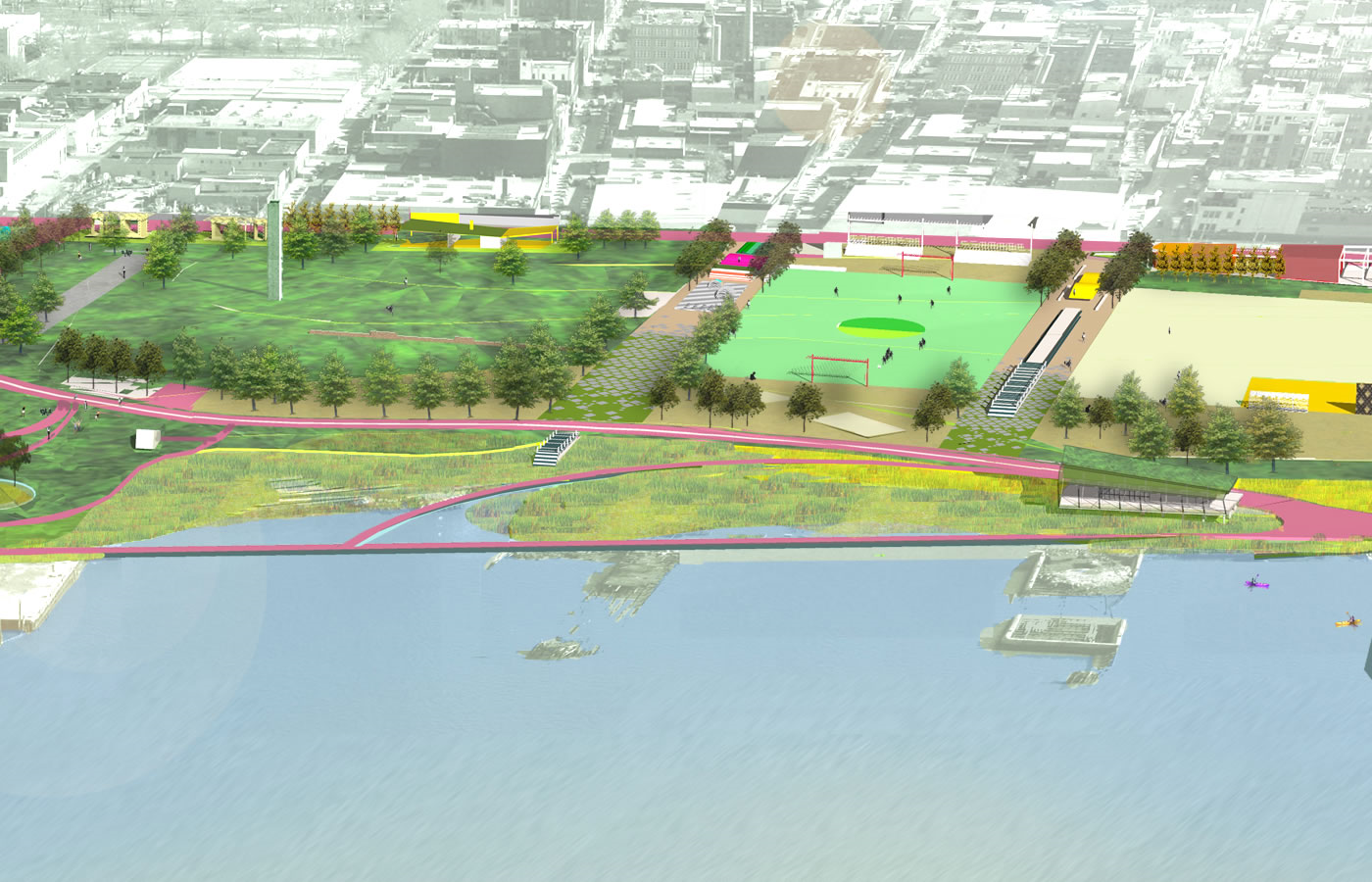Proposal is part of interagency effort to develop blueprint for managing the City’s shoreline. On April 8, 2010, the Department of City Planning held a public hearing on the Vision 2020 Comprehensive Waterfront Plan. Vision 2020 builds on the City’s original 1992 waterfront plan, and Planning is required by local law to submit a new waterfront report by December 31, 2010 and revise it every ten years thereafter.
The Vision 2020 plan is part of a broader City-wide initiative to establish a long-term blueprint for sustainable management of the City’s 578 miles of shoreline. Known as the Waterfront Vision and Enhancement Strategy, the plan also includes the City Waterfront Action Agenda, created by the Economic Development Corporation, to identify high-priority initiatives that could be implemented within the next three years.
The 1992 waterfront plan established an inventory of waterfront areas and developed policies to guide the transition of an underutilized waterfront to post-industrial uses. The City balanced competing uses by planning for four major land use categories: the Natural Waterfront, the Public Waterfront, the Working Waterfront, and the Redeveloping Waterfront (now referred to as the Mixed Use, Residential, and Commercial Waterfront). Since 1992, the City has reclaimed more than 24 miles of shoreline for public use, acquired more than 300 acres of new waterfront park land, and rezoned more than 1,000 acres of waterfront for residential development.
Building on the 1992 plan, Vision 2020 seeks to add concerns not addressed previously, including climate change and rising sea levels. Planning will reexamine the four land use categories and introduce a fifth category — the Blue Network. The Blue Network focuses on in-water activities and includes indentifying opportunities that will expand water taxi, ferry service, and freight movement; promote boating and other forms of recreation; improve water quality; and assess the waterfront’s climate change resiliency.
The public hearing lasted approximately four hours. After a presentation from Planning, a host of local residents and representatives from community and business groups expressed a range of concerns about Citywide issues and those affecting specific neighborhoods. One speaker, a local tugboat operator, commended the City’s efforts to increase the use of waterways as a transportation mode and asked the City to consider the potential benefits of an active industrial waterfront when it examined how and where to expand public waterfront uses. A representative from Queens’ Civic United for Railroad Environmental Solutions recommended that the City use Newtown Creek and other waterways to transport garbage currently being shipped through Queens by rail.
Dewey Thompson, representing the Greenpoint Williamsburg Association for Parks and Planning, claimed that many of the residential towers being developed along northern Brooklyn’s waterfront were not providing the required waterfront space in a timely fashion. Thompson asked the City to find a way to “imagine a vision for the waterfront” that would not require a non-contextual wall of towers along the water. The director of the Rockaway Waterfront Alliance said that many residents do not realize the potential of Rockaway’s peninsular waterfront and urged the City to work with the Alliance during the planning process.
Between May and August, Planning will hold one public workshop in each borough and one workshop focusing solely on Blue Network issues. The draft recommendations will be presented at a final meeting in early autumn.
DCP: Hearing on Vision 2020 Comprehensive Waterfront Plan (April 8, 2010).


